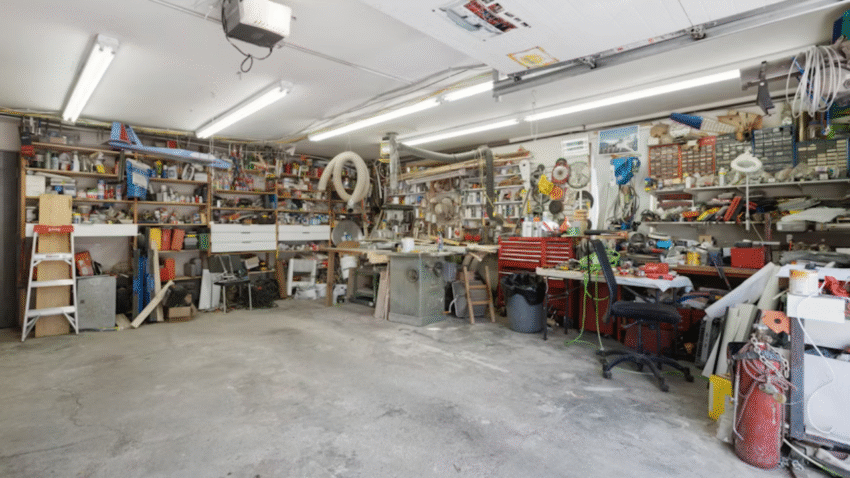Introduction
Over time, even the toughest garage floors can develop cracks. These may be caused by heavy vehicle traffic, shifting soil, moisture infiltration, or simple wear and tear. While some cracks are purely cosmetic, others can grow and lead to bigger structural issues. Learning how to repair cracked garage floor concrete will not only restore a smoother, safer surface but also extend the lifespan of your garage floor.
Why Repairing Garage Floor Cracks Matters
Ignoring cracks in your garage floor can lead to several problems:
- Prevents worsening damage: Small cracks can spread, creating larger structural issues.
- Improves safety: Reduces trip hazards for you and your family.
- Enhances appearance: Gives your garage a cleaner, well-maintained look.
- Prepares surface for coatings: Essential before applying epoxy or sealants.
Whether your garage floor is bare concrete or coated, timely repairs keep it functional and looking great.
Step-by-Step Guide to Repairing Cracked Garage Floor Concrete
1. Assess the Crack
Before you start, determine the type of crack:
- Hairline cracks: Narrow surface cracks caused by shrinkage or minor settling.
- Structural cracks: Wider cracks (over 1/4 inch) that may indicate significant shifting or moisture problems.
Tip: If you see cracks wider than 1/2 inch, multiple large cracks, or cracks with uneven height, consult a professional to rule out foundation issues.
2. Gather Materials and Tools
You’ll need:
- Wire brush or stiff broom
- Chisel and hammer
- Shop vacuum or brush
- Concrete cleaner or degreaser
- Crack filler (epoxy, polyurethane, or concrete patch compound)
- Trowel or putty knife
- Concrete resurfacer (for larger repairs)
- Safety gear: gloves, safety glasses, dust mask
Pro Tip: Choose a crack filler designed for garage floors—these are formulated to handle heavy loads and temperature changes.
3. Prepare the Area
- Remove all vehicles and items from the repair area.
- Sweep or vacuum loose dirt and dust.
- Clean the crack and surrounding area with a wire brush to remove debris, grease, and loose concrete.
- If oil stains are present, use a degreaser—oil can prevent proper adhesion of repair materials.
4. Widen and Deepen the Crack (If Needed)
For hairline cracks, you may need to slightly widen the crack to allow filler to penetrate:
- Use a cold chisel and hammer to chip away loose edges and create a “V” shape inside the crack.
- Vacuum thoroughly to remove all dust and debris.
Safety Note: Wear goggles to protect your eyes from flying debris during chiseling.
5. Apply the Crack Filler
For Hairline Cracks:
- Use a liquid epoxy or polyurethane filler.
- Pour directly into the crack until slightly overfilled.
- Smooth the surface with a putty knife and remove excess material.
For Wider Cracks:
- Use a concrete patch compound or vinyl concrete patcher.
- Mix according to instructions.
- Press the mixture into the crack with a trowel, packing it tightly.
- Level the surface with the surrounding concrete.
Pro Tip: Work in small sections to prevent the filler from drying before you smooth it.
6. Allow Proper Curing
Follow the product’s instructions for curing time—it can range from a few hours to a full day. Keep the area free from foot or vehicle traffic until fully cured.
7. Resurface (Optional)
If your floor has multiple cracks or rough patches, applying a concrete resurfacer can create a smooth, uniform finish:
- Clean and repair all cracks first.
- Mix resurfacer according to directions.
- Spread evenly over the entire floor using a squeegee or trowel.
- Allow to cure completely before using the garage.
Common Mistakes to Avoid
- Mistake: Filling cracks without cleaning them first.
Solution: Always remove dirt, dust, and grease for proper adhesion. - Mistake: Using indoor patch materials for a garage floor.
Solution: Choose heavy-duty fillers made for load-bearing surfaces. - Mistake: Ignoring underlying moisture problems.
Solution: Address leaks or drainage issues before repairing cracks. - Mistake: Not following curing times.
Solution: Let the filler set completely to avoid weak repairs. - Mistake: Leaving cracks untreated before applying epoxy coatings.
Solution: Always repair cracks first for a smooth, long-lasting coating.
Extra Garage Tips & Hacks
- Seal the Floor After Repairs: Applying a concrete sealer or epoxy coating protects against future cracking and staining.
- Maintain a Dry Garage: Keep moisture out with proper drainage and weatherstripping.
- Check Annually: Inspect your garage floor for new cracks each year and repair them early.
For a complete upgrade, see our guide on How to Paint a Garage Door Like a Pro to match your new floor with a refreshed exterior.
Conclusion
Repairing cracked garage floor concrete is a straightforward project that can make a big difference in appearance, safety, and durability. By cleaning, prepping, and filling cracks properly, you can extend the life of your garage floor and prevent costly future damage.
Final Tip: Tackle cracks as soon as you notice them—small repairs are quicker, easier, and less expensive than large-scale fixes.
CTA: Bookmark this guide and keep it handy for your next garage maintenance weekend.
